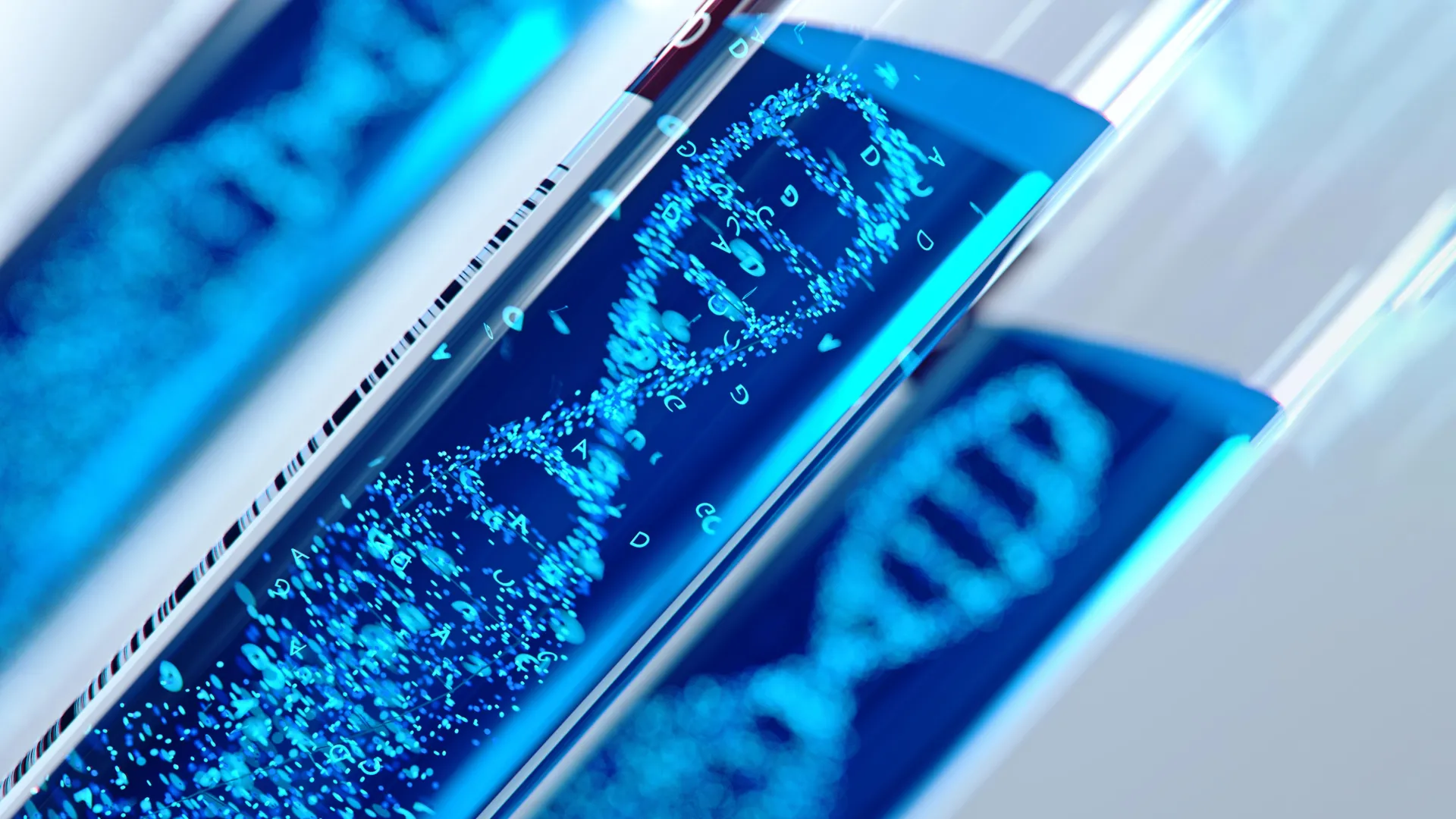In medicine and biotechnology, the ability to evolve proteins with new or improved functions is crucial, but current methods are often slow and laborious. Now, Scripps Research scientists have developed a synthetic biology platform that accelerates evolution itself — enabling researchers to evolve proteins with useful, new properties thousands of times faster than nature. The system, named T7-ORACLE, was described in Science on August 7, 2025, and represents a breakthrough in how researchers can engineer therapeutic proteins for cancer, neurodegeneration and essentially any other disease area.
“This is like giving evolution a fast-forward button,” says co-senior author Pete Schultz, the President and CEO of Scripps Research, where he also holds the L.S. “Sam” Skaggs Presidential Chair. “You can now evolve proteins continuously and precisely inside cells without damaging the cell’s genome or requiring labor-intensive steps.”
Directed evolution is a laboratory process that involves introducing mutations and selecting variants with improved function over multiple cycles. It’s used to tailor proteins with desired properties, such as highly selective, high-affinity antibodies, enzymes with new specificities or catalytic properties, or to investigate the emergence of resistance mutations in drug targets. However, traditional methods often require repeated rounds of DNA manipulation and testing with each round taking a week or more. Systems for continuous evolution — where proteins evolve inside living cells without manual intervention — aim to streamline this process by enabling simultaneous mutation and selection with each round of cell division (roughly 20 minutes for bacteria). But existing approaches have been limited by technical complexity or modest mutation rates.
T7-ORACLE circumvents these bottlenecks by engineering E. coli bacteria — a standard model organism in molecular biology — to host a second, artificial DNA replication system derived from bacteriophage T7, a virus that infects bacteria and has been widely studied for its simple, efficient replication system. T7-ORACLE enables continuous hypermutation and accelerated evolution of biomacromolecules, and is designed to be broadly applicable to many protein targets and biological challenges. Conceptually, T7-ORACLE builds on and extends efforts on existing orthogonal replication systems — meaning they operate separately from the cell’s own machinery — such as OrthoRep in Saccharomyces cerevisiae (baker’s yeast) and EcORep in E. coli. In comparison to these systems, T7-ORACLE benefits from the combination of high mutagenesis, fast growth, high transformation efficiency, and the ease with which both the E. coli host and the circular replicon plasmid can be integrated into standard molecular biology workflows.
The T-7 ORACLE orthogonal system targets only plasmid DNA (small, circular pieces of genetic material), leaving the cell’s host genome untouched. By engineering T7 DNA polymerase (a viral enzyme that replicates DNA) to be error-prone, the researchers introduced mutations into target genes at a rate 100,000 times higher than normal without damaging the host cells.
“This system represents a major advance in continuous evolution,” says co-senior author Christian Diercks, an assistant professor of chemistry at Scripps Research. “Instead of one round of evolution per week, you get a round each time the cell divides — so it really accelerates the process.”
To demonstrate the power of T7-ORACLE, the research team inserted a common antibiotic resistance gene, TEM-1 β-lactamase, into the system and exposed the E. coli cells to escalating doses of various antibiotics. In less than a week, the system evolved versions of the enzyme that could resist antibiotic levels up to 5,000 times higher than the original. This proof-of-concept demonstrated not only T7-ORACLE’s speed and precision, but also its real-world relevance by replicating how resistance develops in response to antibiotics.
“The surprising part was how closely the mutations we saw matched real-world resistance mutations found in clinical settings,” notes Diercks. “In some cases, we saw new combinations that worked even better than those you would see in a clinic.”
But Diercks emphasizes that the study isn’t focused on antibiotic resistance per se.
“This isn’t a paper about TEM-1 β-lactamase,” he explains. “That gene was just a well-characterized benchmark to show how the system works. What matters is that we can now evolve virtually any protein, like cancer drug targets and therapeutic enzymes, in days instead of months.”
The broader potential of T7-ORACLE lies in its adaptability as a platform for protein engineering. Although the system is built into E. coli, the bacterium serves primarily as a vessel for continuous evolution. Scientists can insert genes from humans, viruses or other sources into plasmids, which are then introduced into E. coli cells. T7-ORACLE mutates these genes, generating variant proteins that can be screened or selected for improved function. Because E. coli is easy to grow and widely used in labs, it provides a convenient, scalable system for evolving virtually any protein of interest.
This could help scientists more rapidly evolve antibodies to target specific cancers, evolve more effective therapeutic enzymes, and design proteases that target proteins involved in cancer and neurodegenerative disease.
“What’s exciting is that it’s not limited to one disease or one kind of protein,” says Diercks. “Because the system is customizable, you can drop in any gene and evolve it toward whatever function you need.”
Moreover, T7-ORACLE works with standard E. coli cultures and widely used lab workflows, avoiding the complex protocols required by other continuous evolution systems.
“The main thing that sets this apart is how easy it is to implement,” adds Diercks. “There’s no specialized equipment or expertise required. If you already work with E. coli, you can probably use this system with minimal adjustments.”
T7-ORACLE reflects Schultz’s broader goal: to rebuild key biological processes — such as DNA replication, RNA transcription and protein translation — so they function independently of the host cell. This separation allows scientists to reprogram these processes without disrupting normal cellular activity. By decoupling fundamental processes from the genome, tools like T7-ORACLE help advance synthetic biology.
“In the future, we’re interested in using this system to evolve polymerases that can replicate entirely unnatural nucleic acids: synthetic molecules that resemble DNA and RNA but with novel chemical properties,” says Diercks. “That would open up possibilities in synthetic genomics that we’re just beginning to explore.”
Currently, the research team is focused on evolving human-derived enzymes for therapeutic use, and on tailoring proteases to recognize specific cancer-related protein sequences.
“The T7-ORACLE approach merges the best of both worlds,” says Schultz. “We can now combine rational protein design with continuous evolution to discover functional molecules more efficiently than ever.”
In addition to Diercks and Schultz, authors of the study, “An orthogonal T7 replisome for continuous hypermutation and accelerated evolution in E. coli,” are Philipp Sondermann, Cynthia Rong, Thomas G. Gillis, Yahui Ban, Celine Wang and David A. Dik of Scripps Research.
This work was supported by funding from the National Institutes of Health (grant RGM145323A).







